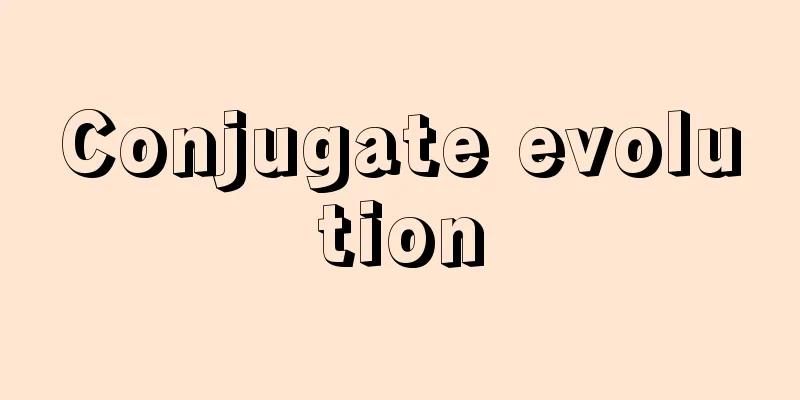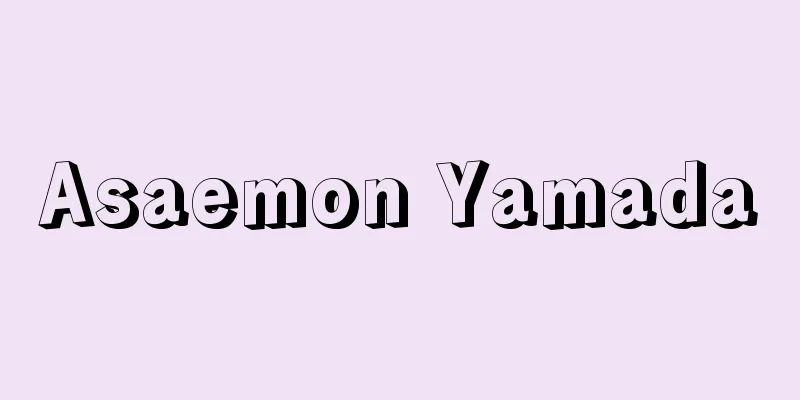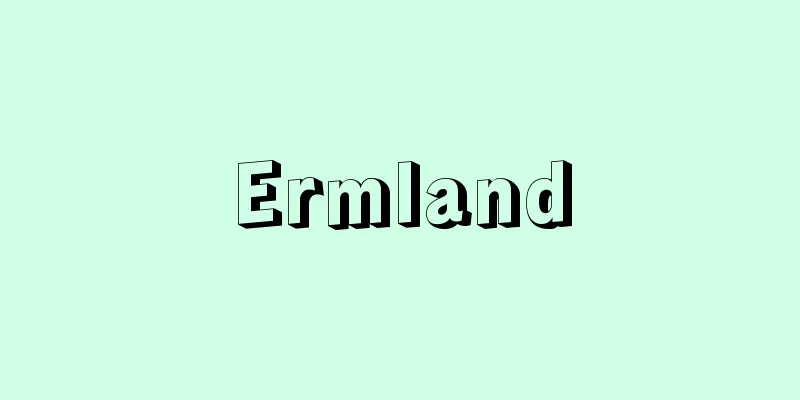Indian literature
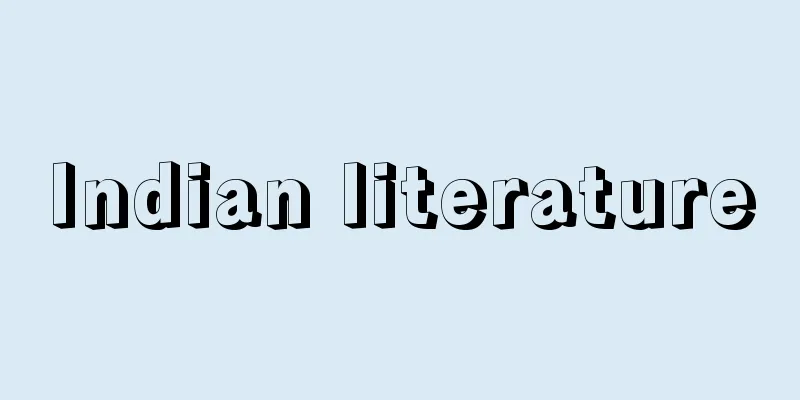
|
India and Pakistan became two separate countries when they gained independence from British rule in 1947, and further separated into East and West Pakistan in 1971 with the independence of Bangladesh. The main reason for the separation of the two countries was religious issues, so Indian literature is supposedly based on Hinduism and Pakistani literature on Islam, but in reality this is not necessarily the case, and Islamic literature in Urdu is also produced in India. Historically, the literatures of India and Pakistan cannot be considered separately, and Sri Lankan literature is also included in Indian literature. The literatures of the three countries have undergone many changes over their long history, and unique literatures have developed based on religions such as Brahmanism, Hinduism, Buddhism, Jainism, and Islam. The languages used are broadly divided into Indo-Aryan and Dravidian, and in modern times, literatures in many regional languages have also developed, making the situation extremely complex. Indian literature can be broadly classified according to the languages used: Vedic literature, Prakrit literature, Sanskrit literature, Tamil literature, and literature of modern languages. [Yoshifumi Mizuno] Ancient and Medieval Indian LiteratureCharacteristics of ancient and medieval literatureSince ancient times, many Indian literary works have had a religious background, and therefore literary history has often been contrasted with the historical development of religious sects such as Brahmanism, Hinduism, Buddhism, Jainism, and Islam. However, from the perspective of literature alone, the division of genres in literary history is not parallel to the division of religious sects. Rather, tracing the flow of literature in India in light of the extremely complex linguistic situation both historically and socially, is essential in understanding the types of people who were involved in its creation, appreciation, and transmission. I will start by providing an overview, and then go into detail on each piece. The vast Indian subcontinent was inhabited by various tribes (still scattered throughout India) who spoke Austroasiatic languages, such as the Dravidian people (who spoke Dravidian languages and still live in South India), and others who spoke Austroasiatic languages, such as the Munda people, who migrated from the West around 1500 BC and wrote the Rig Veda around 1200-1000 BC. Since then, Indian literature has been dominated by creative activities in the Indo-European languages used by the Aryans, but it should not be ignored that cultural elements of the indigenous tribes were also mixed in to a large extent in this work, and that there was mutual influence between this and Dravidian Tamil literature, which is thought to have begun in South India around the 1st century. As research progresses, concrete examples should be clarified one after another. The language of the so-called "Vedic literature" including the Rig-Veda is sometimes included in the broad definition of Sanskrit, but strictly speaking it is more appropriate to call it Vedic. Sanskrit is a language that was developed by the grammarian Panini in the 5th-4th century BC, who organized and systematized the spoken language of Northwest India at that time while referring to examples of Vedic language. It is a special language with detailed grammatical rules, and although there are differences in style, it has maintained a fixed form to the present day. It was the language and written terminology used by the upper classes of society, and became the subject of all kinds of literature, but in the field of literature it provided entertainment in the form of "classical Sanskrit literature = Kabya literature" for about 1,000 years from around the 2nd-3rd century, mainly in the royal palace. Meanwhile, the general public used their own language in various places. They are collectively called Prakrit languages, using a word meaning "natural, as it is". As it was the everyday language of the common people, it changed not only regionally but also over time, depending on various factors. After passing through the Apabhransha stage, it gradually acquired the characteristics of a modern language from around the 10th century, and after coming into contact with foreign languages, it finally reached the linguistic situation seen today. This literature written in Prakrit languages up to the medieval period can be collectively called "Prakrit literature." Although the language found in the written works is different from a purely spoken language and must be considered a literary language, it is clear from the striking difference with Sanskrit that it is close to the language of the common people. The Vedic texts were originally passed down orally, and were written down only later. It is impossible to observe the history of Indian literature closely without keeping in mind that there is a vast world of oral literature behind the texts that exist before our eyes. There are many cases where something that was passed down orally was written down at some point, made into a literary work, and passed down as literature. The two great epics, the Mahabharata and the Ramayana, were also compiled in Sanskrit from long-standing traditions passed down among the common people by groups that made a living from storytelling, separate from the people who preserved the Vedas. There are occasional instances where the writings deviate from the regular Sanskrit grammar, showing their unrefined simplicity, but many of the topics discussed here were worked up by the Kabya poets in the royal court and revived many times as sophisticated epics and plays. The two great epics also spread widely, mainly to Eastern countries such as Southeast Asia, in the form of performing arts such as plays and shadow puppet shows. The fact that the various tale collections in Sanskrit that exist today were originally literally passed down by people, that is, were on the side of the general public, is supported by the legend that the oldest tale collection, Brihatkatha, which is believed to have existed around the 3rd century, was written in Paishati, a Prakrit language. Prior to that, the Jatakas (stories of the Buddha's past life), which are part of the Buddhist scriptures and were written in Pali, also a Prakrit language, in the 4th to 3rd centuries BC, were based on various folk tales. The tales and folk tales used in these works were rehash and rearranged many times in Kabya literature and were inherited by modern language literature, so we can observe how a single motif develops in several versions. However, considering the fact that oral tradition continues to this day through the recording of folk tales in the field, it can be said that this is an area in which the close synergistic effect between written and oral traditions must be fully taken into consideration. Indian narrative literature spread mainly westward, through Persia and Arabia, and into various parts of Europe. Lyric poetry in Indian literature is equivalent to waka or haiku in Japanese literature, and is a short, independent poem that forms a work of art. Just like haiku, it weaves in seasonal scenes or expresses the subtleties of love between men and women in a few lines. The earliest collection of poems in this genre is Sattasai, compiled by Hara in the 1st or 2nd century, and this was also written in Maharashtri, a type of Prakrit. This language, which inevitably has many homonyms due to the weak pronunciation of consonants and the tendency for vowels to frequently repeat, allows for rich expressions such as kakekotoba (word combinations), and is even said to be ideal for the creation of lyric poetry. Despite this, the Kabya poets also incorporated this genre into the entertainment of royalty and the nobility. In Indian literature in general, there is a tendency for works that originated among the common people to be refined and incorporated into the elegant world of the royal court. This movement was likely due to the movement of creative actors, such as street poets being appointed to the royal court. In the royal court, the Kabya poets, whose mission was to pursue beauty of expression rather than originality in the theme and story development of their works based on the tastes of the royal family, did not hesitate to adopt themes that were the same as existing works, and devoted themselves to using their skills and original adaptations to create new works. This is a major characteristic of Indian literature up to the medieval period. Another phenomenon that reflects this taste is the large number of "literary theory books" that were written dealing with various rhetorical devices such as metaphors and theories of literary appreciation. [Yoshifumi Mizuno] Vedic literatureThe Vedic literature, a series of texts created successively between 1200 and 500 BC, is a religious text of Brahmanism that places great importance on rituals. Except for supplementary texts, all of them are considered divinely inspired literature (Sruti) and are distinguished from traditional literature (Smriti) created by sages. There are various Vedas for different roles in rituals: Rig (invocation and praise of the gods), Sama (melody-filled singing), Yajur (practical duties such as offerings), and Atharva (supervision of the entire ritual after increasing profits and subjugation). Each of these has its own sections, either independently or combined, such as Samhita (a collection of hymns and ritual texts), Brahmana (methods of use and explanations of meaning), Aranyaka (secret teachings), and Upanishad (philosophical observations). Of these, the Rig-Veda is the most important from a literary point of view. It consists of 10 volumes and 1,028 poems, but because they were actually created by multiple poets, the quality of the poems varies. They are mainly splendid and solemn hymns to the gods who are supposed to be behind various natural phenomena, such as the sun god and the wind god. This form of poetry praising the gods was later adopted by Buddhism, Jainism, and Hinduism, forming a genre called stotra (hymn). [Yoshifumi Mizuno] Prakrit literatureThe period can be roughly divided into three periods: the ancient (up to the 2nd to 3rd century), the middle, and the new (10th century and after). Among the Buddhist scriptures in the Pāli language, which belong to the ancient period, there are the already mentioned Jatakas, which form the upper reaches of narrative literature, as well as the poetry collections Theraghāta (Verses of the Elders) and Therighāta (Verses of the Elders), which contain poems with elements of the lyric poetry of later Kabya literature and can be considered to play a part in the history of literature. Also, although it falls in the middle period, works depicting the history of religious communities, such as the Mahāvansa, are written in the form of epic poems and are quite fascinating. The tradition of the Pāli scriptures remains today in Sri Lanka and other Southeast Asian countries. Jains left behind a vast amount of scriptures in Prakrit, known as Ardha-Magadhi, by the White Robe Sect, and the Naturist Sect also wrote in various Prakrit languages according to the era, contributing to the development of this literature. Paumacharya, written in Maharashtri from around the 2nd or 3rd century, is a Jain version of the epic poem Ramayana, which will be discussed later. There is also a work called Vasudevahindi, which is a Jain version of the Brihatkatha, a collection of tales mentioned above. Hemacandra, a Jain scholar who lived in the 11th or 12th century, wrote many academic books as well as stotras and epic-style biographies of saints, and was also notable for his achievements as a poet. The new stratum of Apabhramsha works, such as the Neminahachariu by Haribhadra (12th century), are also prominently composed by Jains. In addition, during the middle ages, Shauraseni, Magadhi, Paishachi, etc. were used as dramatic Prakrit languages for the dialogue of characters in the plays of Kabyya literature, depending on their status. [Yoshifumi Mizuno] The two great epicsThe Mahabharata, which is based on an 18-day war between the Kurus and the Pandavas, two clans of the Bharata clan, that is believed to have actually taken place in northern India around the 10th century B.C., expanded with the addition of various elements to the framework originally told by bards, and by the 5th century AD, had taken on its present form of 18 volumes and about 100,000 verses, including the supplement "Harivanshas." It is filled with many myths and legends, giving it the character of an encyclopedia of Hinduism, but the "Bhagavad Gita," which consists of about 700 verses in the sixth volume, is still highly regarded today as a work that represents the Hindu spirit. In addition, "The Story of Savitri" and "The Story of King Nara" are also highly regarded as individual poems. There are many Rama stories in the history of Indian literature that depict the deeds of Lord Rama, whom Indians revere as the ideal male figure, but the earliest of these is the Ramayana, attributed to Balmiki. The current form, consisting of seven volumes and about 24,000 verses, is thought to have been completed around the 3rd century. It is considered to be an Adi-Kabya (the first Kabya work) because of the sophistication of its language and style, and is sometimes considered to be the precursor of later Kabya literature. Today, Indians generally consider the 16th century Hindi (Awadhi dialect) Ram-Charit-Manas by Tulsidas to represent the Rama story, because it is linked to the rise of the Vaishnavite bhakti faith (an easy path that values faith), and it is proof of the immense importance of the Rama story in Indian culture. As mentioned above, the story of Rama is not limited to India but has also spread to Southeast Asian countries. The Puranas, which are considered to be on par with the two great epics because they record all aspects of Hindu culture written by ordinary people (especially the priests of temples and pilgrimage sites), are thought to have been in existence since around the 4th century, and there are 18 major Puranas, but their literary value is generally low. However, the Bhagavata Purana, which is said to have been written in South India around the 10th century, is important in that it contains the birth of Krishna, who is equally as popular as Rama, and is connected to 15th-16th century Hindi (Braj-Bhasha dialect) literature, which was also cultivated within the Bhakti faith. In addition to these, there are many other sacred texts (such as the Agamas) held by various Hindu sects, but they cannot be counted as literary works. [Yoshifumi Mizuno] Classical Sanskrit Literature = Kabya LiteratureIt was Buddhist poets who led the way in Kabya literature. From manuscript fragments discovered in Central Asia in the early 20th century, it was revealed that the oldest dramatic works in India were Buddhist dramas. Since Kabya literature is mainly set in the royal palace, the religious sect of the ruling dynasty is clearly reflected in the religious beliefs of the court poets. Ashvaghosha, who is said to have been on friendly terms with King Kanishka of the Kushan dynasty, who was a Buddhist, wrote epics such as the Buddhacharita and Saundaramanda, which depict the life of the Buddha. He is an important poet in that he was both influenced by the Ramayana and by later generations. There are 13 plays of similar importance that are attributed to Bhasa, whose birth and death dates are unknown. The themes of these plays, whose manuscripts have been found in South India, are drawn from the Mahabharata, Ramayana and Brihatkata families of tales. The pinnacle of Kabya literature is the Gupta poet Kalidasa. He left behind a masterpiece of drama called Shakuntala, which is said to have been highly praised by Goethe, epic poems such as Raghuvansha, which deals with Rama, and the lyric poem Meghaduta (Messenger of the Clouds), which was often imitated as later emissary literature. Subsequent epics include Bharavi's Kiratharajuniya and Magha's Shishupalabada (both based on the Mahabharata), as well as the unique Ravana Bada (6th-7th century) which is an illustration of grammatical rules within the story of Rama. In the 10th-12th centuries, epics were also created that interwoven the deeds of the princes and princes served by the poets. The creation of drama was contributed by such figures as the Buddhist king Harsha, Bababhuti who wrote works such as Uttara Ramacharita which deals with Rama, Bhatta Narayana (7th-8th century) who wrote the popular Bani Samhara, and Shudraka (9th-10th century) who wrote many works. Prabodha Chandrodaya by Krsnamisra in the 11th century is distinctive in that it is an allegorical play in which abstract concepts are personified, with the aim of promoting the doctrine of Vaishnava, and this style has often been imitated and adapted into modern language literature. The authors of so-called legendary novels, which are written in prose using skillful techniques and have unusual content, include Dandin, Subandhu (around the 7th century), and Bana, all of whom were active around the 7th century. Poets such as Bhartrihari, Amar, and Bilhana are part of the movement of lyric poetry that began with the Prakrit work Sattasayi. The Gita Govinda by Jayadeva, who served the 12th-century Bengali dynasty, is a love lyric poem that sings of the subtleties of the love between Krishna and his lover Radha, but as a whole it has a story and is both epic and dramatic, and not only is it unique in form, but it also employs local song forms between chapters, foreshadowing the transition to modern language literature and is considered a masterpiece that symbolizes the end of Kabya literature. In the field of narrative literature, the Brihatkatha lineage mentioned above often produced large collections of stories, such as the Katasaritsagara (11th century) by Somadeva of Kashmir (11th century). An example of a piece of a story that was incorporated into one of these and was passed down as an independent work is the Betarapanchavinshatika (25 Tales of the Dead Ghost), which has been passed down in modern language literature. Panchatantra (a five-volume work) is a collection of tales that focuses on teaching moral lessons, and seemingly countless versions have been handed down. It includes animal fables that are comparable to Aesop's fables, and the origins of the two are much debated, but this type of tale originated in India and is said to have been translated into Persian in the 6th century, and from there it was translated into Syriac (6th century), Arabic (around 750), and Hebrew (12th century), before being transplanted into Spanish, German (15th century), Italian, and English (16th century). This is one example of the great influence that Indian literature has had on world literature. [Yoshifumi Mizuno] Literary theoryBehind the various literary works we have seen above, there must have been rules that had to be followed in order to create them. Otherwise, there would not have been such a degree of control over the compositional forms of each genre and the poetic forms such as rhyme. Rhythm was counted as one of the auxiliary sciences of the Vedas in ancient times, but at first it was not a codified rule. Just as theoretical treatises (shastras) were frequently compiled in various fields of human life, theoretical treatises began to be compiled on literature as well. The first of these is the Natyashastra by Bharata, which is thought to have been compiled around the 3rd century. After that, many poetic theorists appeared, including Dandin and Bhamaha (8th century), up to modern language literature in the 18th century. They engaged in detailed discussions of rhetorical devices such as metaphor, and developed a theory of literary appreciation based on psychological considerations unique to India, called rasa theory. [Yoshifumi Mizuno] Modern Indian LiteratureCharacteristics of modern literatureModern Indian literatures were born between the 10th and 13th centuries. Classical languages such as Sanskrit and Prakrit were changing and splitting into several languages during that time, and the difference between classical languages and the spoken language of the people became very large. Thus, the seeds of modern languages began to appear in the spoken language, and fragmentary works such as hymns and folk songs were created in modern languages, coexisting or mixed with Apabhramsha literature, which was the final stage of the classical period. Since then, modern language literature has undergone continuous historical development to the present day, and there are many such as Hindi literature, Urdu literature, Bengali literature, Odia literature, Assamese literature, Punjabi literature, Gujarati literature, Marathi literature, Sindhi literature, and Sinhalese literature in the Indo-Aryan language family, and four such as Tamil literature, Malayalam literature, Kannada literature, and Telugu literature in the Dravidian language family. Among these, Tamil literature has an exceptionally early origin, dating back to around the 1st century AD. These literatures have had themes and styles specific to the ethnic groups, regions, and sects that nurtured them. For example, Sangam literature (Tamil literature), which was compiled with the encouragement of ancient literary academies, Ghazals (Urdu literature), a form of lyric poetry originating from ancient Arabic poetry, Chalyapada (Bengali literature), a late esoteric Buddhist hymn, and Maniprabharam (Malayalam literature), a hybrid style of Sanskrit and modern ethnic languages, are works and genres specific to each of them. However, modern Indian literatures do not exist in isolation from one another. To a certain extent, they have developed under a common historical background - the collapse of a powerful unified nation, the struggle for supremacy among many warlords, the penetration and domination of Muslim forces from the northwest, colonization by Britain and liberation from it - and they share the tradition of Sanskrit literature, such as the Puranas and epics, and many of them have experienced the Bhakti (fervent faith) movement that spread throughout India. Thus, while each literature has its own unique characteristics, they also share similarities and connections in ideas and materials. Adaptations of the same Bhagavata Purana were written in the 16th century by Jagannathadasa in the Oriya literature of the east, and by Eknath (c. 1533-c. 1599) and Kampan (c. 1180-c. 1250) in the Marathi literature of the west. Adaptations of the Ramayana were also written in the 12th century by Kampan (c. 1180-c. 1250) in the Tamil literature of the south, and by Tulsidas in the 16th century in the Hindi literature of the north. Modern Indian literature can be divided into three periods, with British rule in India as the dividing line: (1) from its birth to the establishment of British rule (18th and 19th centuries), (2) the British colonial period, and (3) after the independence of India and Pakistan from Britain (1947). [Sakata Teiji] From its birth to the establishment of British ruleIn this period, verse literature was mainly produced by people who belonged to religious sects or large and small imperial courts, or who were around them. In these works, the doctrines of the sects or religious sects were preached in the form of hymns and epics (Surdas's Sursagar, Tulsidas's Ram-Charit-Manas, etc.), and the valor and love of kings and nobles was sung (Chand Bardai's Prithvi Raj Raso (c. 1126-c. 1192) and Biharilal's Seven Hundred Poems (Satsayi, etc.). Therefore, it is possible to understand that the literature of this period was produced by a limited number of people, but in the background, each sect was developing various movements to unite God and man, involving the masses, and songs, legends, and stories that were circulated among the people constantly provided material for literature, so factors originating from the masses contributed greatly to the formation of religious literature and imperial literature. [Sakata Teiji] British ruleAfter India was incorporated under British rule, literature learned much from Western thought and literature through English, and from there developed a movement to seek one's own identity in the light of modernity, making a great contribution to the formation and promotion of national consciousness. Although verse literature did not disappear during this time, prose literature came to dominate, and themes were liberated from the formulaic shells of sectarian doctrines and the valor and love of kings and princes, and shifted to questions about the nature of the race and nation (such as the essays of Bharatendu Harishchandra (1850-1885) and the poems of Jaishankar Prasad (1889-1937)) and works that convey the lives and emotions of secular people (such as the long and short stories of Premchand and Yashpal). [Sakata Teiji] After independence from BritainAfter India gained independence from Britain, its literature was filled with the joy of being liberated from slavery and the enthusiasm to build a new society for the people (for example, the collection of cultural essays by Ramdhari Singh (1908-1974), pen name Dinkar). However, before long, internal conflicts arising from differences in religion, region, class, political stance, etc. erupted, resulting in repeated bloodshed, and tensions between those who had awakened to a modern self and the traditional society that surrounded them also became apparent, and the anguish of those living in such conditions began to be etched into its literature (for example, the novels of Bharma and the poems of Mukti Bodh). [Sakata Teiji] Current situation and issuesになったんです。 English: The first thing you can do is to find the best one to do.になったんです。 English: The first thing you can do is to find the best one to do. Krishan Chandar's collection of Urdu short stories, "Peshawar Express" (1947), was published, and after a quarter of a century, Bhisham Sahni (1915-2003)'s Hindi novel "Tamas (Dark)" was published in 1974. Children's literature is also developed through international exchanges with authors and readers. A.K. Datta (1946-)'s "The Path of Kaziranga (1979, English), which celebrates the adventures of a courageous boy, was published in India, and stories in English and ethnic languages have become popular in hardcovers and magazines in Pakistan, Sri Lanka and other countries. In addition to creative writing, Indian children's literature also takes many subjects from collections of classical tales, and it is important to note that it contributes to the greatest contributions in passing on traditions to children. Thus, the 1970s was when modern Indian literature began to broaden its authors, protagonists and readers and began to travel on the path to national literature. This trend continued, and in the 1980s, Malenaard Tales (1980), a dream of cooperative activists living in the mountains of South India, was written by K.P. Tales of Poornachandra Tejaswi (1938-2007) in the Dravidian Kannada language. By that time, literary works were easily available in the form of hardcover books, pocket books, and serialized newspapers and magazines in various languages. になったんです。 English: The first thing you can do is to find the best one to do. The setting in which the selection of a daughter in a wealthy family is carried out in a large family system with a different intention from the person's own feelings is an Indian reality in which traditional systems and individual will often cause friction. This work is said to have been a nominee for the Nobel Prize in Literature. [Sakata Sadaji] Main literature by language systemAs mentioned above, Indian literature needs to be looked at in light of its complex linguistic situation. Here we will summarize the main literature by language system. [Ishida Hideaki] Hindi literatureHindi literature is a general term for the literature spoken in North India using Hindi and its dialects, and its origins around 1000 AD. From the early to mid-Era (11th to 18th centuries), literature mainly consisting of verses from various regions flourished, and modern literature using Hindi (Kari Bouri dialect), which established itself as a common language after the middle of the 19th century. In the early years (11th to 13th centuries), various religious poets, as well as heroic epics of royals around the world, were preferred. Chand Balday is a representative poet of heroic epics. In the middle period (14th to 18th centuries), people's religious passions (especially Hindu Bhakti faith) also appeared in literary activities. In the Krishna poetry, Vidyapati (around 1352-1448), Surdas, Meera Bai, and Rama faith Tulshidas were featured. Kabir was one of the religious poets influenced by Islam. In the 16th century, Jaesi wrote love stories that contained Sufi ideas (Islamic mysticism). In the latter half of the mid-term, court poets such as Bihariraal competed in rhetoric and skill based on romantic poetry. Bharatendu opened up modern Hindi literature in the late 19th century. His achievement was to promote prose, and aimed at awakening social consciousness through plays and essays. In the 20th century, M. Dubivivedi (1864-1938) established the Kari Boley dialect as the standard Hindi literary language. After World War I, romantic chaya wards became the mainstream, and J. Prasad and others expressed ethnic awareness under colonial rule. In the 1930s, progressivism emerged, depicting the hopes and setbacks of the people for freedom. Premchand was a representative novelist of the time. From the late 1940s, Aggiehe advanced the intellectual praya wards (experimentalism). In the field of novels, a new short story depicting the feelings of the middle class of urban cities and a "regional literature" depicting rural rural areas occurred in the 1950s. These two literary trends became the basis for subsequent Hindi literature, and the "parallel literature" of the 1970s, which was expected to be revolutionary energy of the masses, and the "people literature" that has been developed as an extension of this line of work, which has been a rapid change in society. Currently, a variety of works have been created due to the rapid changes in society, but "regional literature" uses a lot of dialects to make it even more involved with the local area, creating a group of works rich in local lifestyles. [Ishida Hideaki] Urdu Literatureになったんです。 English: The first thing you can do is to find the best one to do. As the 19th century began, as British rule in India was established, movements to deal with social changes appeared in literature, and Nazir Ahmad (1830-1912) wrote the Bride's Kagami, which preached the importance of women's education. In the field of poetry, some criticized the standard lyric poem Gazal and advocated for writing a variety of subjects. Mirza Muhammad Hadi Ruswa (1857/1858-1931), which depicts the life of the geisha in Lucknow, was famous as the first realist novel in Urdu. になったんです。 English: The first thing you can do is to find the best one to do. Qurratul Ain Haidar (1927-2007), who explored the reasons for the existence of Indian Muslims in his novel "The River of Fire," and Intizar Hussain (1925-2016), who wrote works that use imagination to use materials such as stories from the Indian and Muslim worlds and fables. [Hagita Hiroshi] Bengali literatureになったんです。 English: The first thing you can do is to find the best one to do. In form, these religious poems are mostly similar to songs or songs, and some of their spirits are still carried over to today, like Kilton (a form of religious songs) and Baul (a type of bard). The outdoor drama Jattra also began in the Middle Ages and still remains alive today. In the early 19th century, Bengal was exposed to European culture through England, and its literature also changed dramatically. After publishing newspapers and magazines and introducing prose, in the middle of the 19th century, authors such as Bankim Chandra Chattopandhyay (1838-1894) appeared, and the genre of novels became established, and Madhusudan Dutt (1824-1873) in poetry and Girischandra Ghosh (1844-1912) in plays shaped their own modern styles.になったんです。 English: The first thing you can do is to find the best one to do. [Niwa Kyoko] Marathi LiteratureMarathi literature is a Marathi language literature mainly used in Maharashtra in the Midwest India, and has a history of about 1,000 years. From the early to mid-term (11th to 18th centuries), it was mainly a time of religious poetry, and modern literature blossomed in the middle of the 19th century. になったんです。 English: The first thing you can do is to find the best one to do. Moropant (1729-1794) was a representative poet of that era. になったんです。 English: The first thing you can do is to find the best one to do.になったんです。 English: The first thing you can do is to find the best one to do. The shock spread throughout the Indian literary world, and now the region's "Dalit literature" has been written in many Indian languages. [Ishida Hideaki] About Japanese translationsSince the 1980s, Indian literary works have been translated in a relatively balanced way. Classical literature is published by Iwanami Bunko and Toyo Bunko (Heibonsha), while modern and contemporary literature is published by the "Choice of Contemporary Indian Literature" (Mekon) and "Contemporary Literature in Asia" (Daido Life International Fund), and by experts by language and genre of works. Details of the Japanese translation of modern and contemporary Indian literature are written in Sakata Teiji (1938-), "Japanese translation of literature in modern South Asian languages" (1992, No. 4, South Asian Studies Society of Japan), and Morimoto Soko (1955-), "Reading South Asian Modern and Contemporary Literature in Japanese" (2000, No. 12 of the same magazine). [Sakata Sadaji] になったんです。 English: The first thing you can doになったんです。 English: The first thing you can do "Beeshm Saheny, translated by Tanaka Toshio, "Tamas" (1991, Daido Life International Cultural Fund)" ▽ "Upeendranath Ashk, supervised by Takahashi Akira, translated by Miki Yuichiro, "The Crushing Wall" (1991, Daido Life International Cultural Fund)" ▽ "Hadija Mastur, edited by Suzuki Bin, "The Woman Called Darda" (1992, Daido Life International Cultural Fund)" ▽ "Uemura Katsuhiko and Miyamoto Keiichi, "The Dream of India: The Love of India: Sanskrit Anthology" (1994, Shunjusha)" ▽ "The Kick of a Prostitute - Classic Indian Theatre, Chaturbani" (1994, Shunjusha)" ▽ "Faiz Ahmad Faiz, translated by Kataoka Hiroji, "Faiz Poetry Collection" (1994, Hana Shrine)" ▽になったんです。 English: The first thing you can do is to find the best one to do . "Choice of Contemporary Hindi Short Story 1" (1999, Daido Life International Cultural Foundation)" ▽ "Kata Sarit Sagara 1-4" (Iwanami Bunko)" ▽ "Dandin, translated by Tanaka Otsuya and Sashida Kiyotaka, "The Tale of the Ten Princes" (Heibonsha, Toyo Bunko)" ▽ "Hitopadesha" (Iwanami Bunko)" ▽ "Kanakura Ensho and Kitagawa Hidenori" ▽ "Rig Vedic Hymns" (Iwanami Bunko)" ▽ "Karidasa, translated by Tsuji Naoshiro, Princess Shakuntala" (Iwanami Bunko)" ▽ "Shomadeva, translated by Uemura Katsuhiko, translated by Uemura Katsuhiko, "Twenty-five Shikis: Collection of Indian Legends" (Heibonsha, Toyo Bunko)" ▽ "Varmiki, translated by Iwamoto Yutaka, Ramayana 1-2 (Heibonsha and Toyo Bunko)" ▽ "Nun's Confessions - Tayly Ghatar" (Iwanami Bunko)" ▽ " Nun's Confessions - Tayly Ghatar" (Iwanami Bunko)" ▽ "Namou Publishing: Confessions of Buddhist Disciples - Tayla Ghatar" (Iwanami Bunko)" ▽ "Mahabharata: The Tale of King Nara - The Strange Life of Princess Damayanti" (Iwanami Bunko)" ▽ "Bagavad Gita" (Iwanami Bunko)" ▽ "Namou Publishings of Hinduism - Gita Govinda, Devi Mahatmya" (Heibonsha and Toyo Bunko)" ▽ "Namou Publishing: Two Hindu Scriptures - Gita Govinda, Devi Mahatmya" (Heibonsha and Toyo Bunko)" [References] | | | | | | | | | |Uudhu| | | Sanskrit| | | | | | | | | |Tagore| | | | | | |Bhana| | | | | | | | | | | | | | | | | | | | | | | |Source: Shogakukan Encyclopedia Nipponica About Encyclopedia Nipponica Information | Legend |
|
インドとパキスタンは、1947年にイギリスの統治から独立するとともに、分離して二つの国となり、さらに1971年バングラデシュの独立によって東西パキスタンも分離した。両国分離のおもな原因は宗教上の問題にあったから、インドの文学はヒンドゥー教を、パキスタンの文学はイスラム教を思想的背景とするたてまえであるが、実際にはかならずしもそのとおりではなく、ウルドゥー語によるイスラム教的文学はインドでも行われている。インドとパキスタンの文学は、歴史的には分離して考えることはできないし、スリランカの文学もインド文学に包含される。3国の文学は長い歴史の間に多くの変遷を経過し、バラモン教、ヒンドゥー教、仏教、ジャイナ教、イスラム教などの宗教を背景とする独自の文学が発達し、また使用言語も、インド・アーリア語系とドラビダ語系に大別され、近代にはさらに多数の地方語の文学も発達したので、その様相はきわめて複雑である。インドの文学は使用言語ごとに、ベーダ文学、プラークリット文学、サンスクリット文学、タミル文学、近代諸言語の文学に大別することができる。 [水野善文] 古代・中世のインド文学古代・中世文学の特色インドの文芸作品は古来、宗教的思潮を背景とするものが多くを占めていたため、文学史を語る際も、バラモン教、ヒンドゥー教、仏教、ジャイナ教、イスラム教といった教派の歴史的展開と対照させることがしばしばなされてきた。しかし、純然たる文学という視点にたてば、文学史上のジャンル区分は宗教教派の区分と平行関係にあるわけではない。むしろ、インドにおいて歴史的にも社会的にも非常に複雑な様相を呈している言語状況と照らし合わせながら文学の流れをたどることが、創作・享受・伝承に携わっていたのはどういう人々なのかを知るうえでも肝要である。まず概観を述べてから、個別に詳述しよう。 広いインド亜大陸の各地には、かつてインダス川沿いに繁栄したインダス文明の担い手と目されるドラビダ民族(ドラビダ語族に属する諸言語を使用、現在も南インドに居住)をはじめ、ムンダ系など、アウストロアジア語族に属する言語を使用する諸民族も居住していたが(現在もインド各地に点在)、紀元前1500年ごろ西方から移入してきたアーリア人による、紀元前1200~1000年ごろ成立の『リグ・べーダ本集(ほんじゅう)』をもって、文芸創作活動の端緒が開かれた。以降、アーリア人が使用するインド・ヨーロッパ語族に属する諸言語による創作活動がインドの文芸の主体であり続けるのだが、そのなかには先住の諸民族の文化的要素も多分に混ざり込んでいること、また、1世紀ごろから南インドで始まったとみられるドラビダ系のタミル文学との間に相互の影響があったことは無視されるべきではなく、今後さらに研究が進めば、具体的事例が次々と解明されるはずである。 『リグ・ベーダ本集』を初めとするいわゆる「ベーダ文献」群の言語は、広義のサンスクリット語に含められることもあるが、厳密にはベーダ語という呼称が適当である。サンスクリット語とは、紀元前5~4世紀の文法学者パーニニがベーダ語の用例を参照しつつ当時の北西インドの話しことばを整備し体系化したものをさす。文法規則が詳細にわたって規定され、文体等に差異は認められるものの、現在まで固定された形を保つ特殊な言語である。これが社会の上流階級の使用言語および文章用語とされ、万般にわたる文献の具となったのだが、文学の分野では王宮をおもな舞台に2~3世紀ごろからおよそ1000年間「古典サンスクリット文学=カービヤ文学」という形で娯楽を提供した。その一方で、一般民衆は各地で自らの言語を使用していた。それらは総称して「自然な、ありのままの」という意味の単語を用いてプラークリット諸語とよばれる。いわば民衆の日常語であるから、地域的バラエティーのみならず、時間的にもさまざまな要素のもとで刻々と変化し、アパブランシャという段階を経て、10世紀ごろから徐々に近代語の特徴を備え、外来の言語と接触しつつ、ついには今日みられる言語状況へと至るのである。この、中世期までのプラークリット諸語による文学を一括して「プラークリット文学」とよぶことができる。文献化された作品にみられる言語は純然たる話しことばとは異なり、文語とみなさざるをえないものではあるが、民衆の言葉に近いものであることはサンスクリット語との差異の著しさからも明らかである。 ベーダ文献はそもそも口頭伝承されていたものであり、文字化されたのは後代であった。われわれの眼前に現存する文献の背後に、こうした口承文芸の広大な世界が存在することを念頭に置かなくては、インドの文学史をつぶさに観察することにはならない。口頭で伝承されてきたものが、あるとき文字化され、文芸作品に仕立てあげられ、文献としても伝承されるようになったケースが少なくないのである。『マハーバーラタ』および『ラーマーヤナ』の「二大叙事詩」も民間において、ベーダを保持した人々とは別の、「語り」を生業とする集団によってそれぞれ長く伝承されてきたものがサンスクリット語でまとめられたものなのである。正規のサンスクリット文法を逸脱している形態が散見されるところに、洗練されていない純朴さが認められるが、ここに語られた多くのトピックが、王宮にいたカービヤ詩人によりくみ上げられ、洗練された叙事詩作品や戯曲作品として幾度もよみがえることになる。また二大叙事詩は演劇や影絵芝居といった芸能の形態をとりながら東南アジアなど、おもに東方の諸国に広く伝播(でんぱ)した。 サンスクリット語で現存する各種の説話集のたぐいも、個々の説話は元来文字どおり人々の語り伝えていたものであったこと、すなわち一般民衆の側にあったことは、3世紀ごろには存在したと推測される最古の説話集『ブリハットカター』がプラークリットの一つであるパイシャーチー語でできていたという伝説からも傍証される。それ以前、やはりプラークリットの一つパーリ語で紀元前4~3世紀に成った、仏教聖典の一角をなす『ジャータカ』(ブッダの過去世物語)は各種の民話を素地としたものであった。そうした作品に採用された説話・民話は、カービヤ文学において幾度も焼き直し、組み替えがなされ、近代語文学へも継承されたから、一つのモチーフがいくつものバージョンにわたって展開していく様子を観察することができる。ただ、現地での民話採録によって今日も口頭伝承の持続が確認される事実からかんがみて、文献伝承と口頭伝承の密接な相乗作用を十分に勘案しなければならない分野といえよう。インドの説話文学は、おもに西方へ広がり、ペルシア、アラビアからヨーロッパ各地にも伝えられている。 日本の文学でいえば和歌や俳句に相当し、短い単独の詩で一作品を形成しているのがインド文学における抒情(じょじょう)詩である。まさに俳句のように季節の風物詩を織り込んだり、男女間の恋愛の機微を数行で表現するものである。この分野の最初期の詩集に1~2世紀のハーラ編集の『サッタサイー』という作品があるが、これもプラークリットの一種マーハーラーシュトゥリー語によっていた。子音の発音が弱まり頻繁に母音が連続する傾向から必然的に同音異義語が多くなるこの言語は、掛詞(かけことば)などの豊かな表現を可能にするので、抒情詩の創作に最適だとさえいわれている。にもかかわらず、カービヤ詩人たちはこのジャンルも、王族・貴族の娯楽に取り込んでしまう。 おしなべてインドの文学では、民衆の側で萌芽(ほうが)したものが王宮の雅(みやび)やかな世界にくみ上げられ洗練をみるという傾向を示している。その動きのなかには、巷間(こうかん)の詩人が王宮に登用されるといった創作の当事者たちの移動によるケースも多々あったものと思われる。王宮にあって、王族たちの嗜好(しこう)に基づき、作品の主題およびストーリー展開の独創性よりも表現の美しさを追求することが使命とされたカービヤ詩人たちは、既存の作品と同一の主題であっても臆(おく)することなく採用し、技巧を凝らし独自に脚色して新たな作品に仕立てあげることに専念した。ここに中世期までのインド文学の大きな特徴が認められる。こうした嗜好を反映するもう一つの現象として、比喩(ひゆ)などのさまざまな修辞や文芸鑑賞理論を扱う「文学理論書」が数多く記述されたことがあげられよう。 [水野善文] ベーダ文学紀元前1200年から前500年ごろまでの間に逐次創作された一連のベーダ文献は、祭式を重視するバラモン教の宗教文献である。補助文献を除き、すべては神の啓示によるとして天啓文学(シュルティ)とみなされ、聖者が創作した聖伝文学(スムリティ)と区別される。祭式の役割分担ごとに「リグ」(神の勧請と称讃(しょうさん))、「サーマ」(旋律つきの歌詠)、「ヤジュル」(供施などの実務)、「アタルバ」(増益および調伏のち祭式全体の監督)の各べーダがあり、そのそれぞれに「サンヒター(本集)」(讃歌、祭詞の集成)、「ブラーフマナ」(運用法、意義の解説)、「アーラニヤカ」(秘説)、「ウパニシャッド」(哲学的考察)という各部が独立して、あるいは融合して存在する。このうち文学的な観点から重要なのは『リグ・ベーダ本集』である。10巻1028歌よりなるが、実際の創作は複数の詩人によっているから、詩歌によって巧拙の差がある。太陽神、風神などもろもろの自然現象の背後に想定される神々に対して詠まれる華麗、荘重なる讃歌が主体となっている。この、神々を称讃する詩歌の形式は、のちの仏教、ジャイナ教、ヒンドゥー教のいずれにも引き継がれ、ストートラ(讃歌)とよばれるジャンルを形成することになる。 [水野善文] プラークリット文学大まかに古層(2~3世紀まで)、中層、新層(10世紀以降)の三つに時代区分される。古層に属するものとして、パーリ語による仏教聖典群のなかに、説話文学の上流をなす既述の『ジャータカ』のほか、『テーラ・ガーター』(長老の偈(げ))、『テーリー・ガーター』(長老尼の偈)という詩集には、のちのカービヤ文学の抒情詩的要素をもつ詩があり、文学史の一翼を担うものとみなしうる。また時代的には中層になるが『マハーバンサ』など、教団史を描いた作品は叙事詩形式をとっていて味わいがある。パーリ仏典の伝統は今日もスリランカや東南アジア諸国に残っている。 ジャイナ教徒は、白衣派がアルダ・マーガディー語というプラークリットで膨大な聖典を残しているほか、裸形派も時代に応じてさまざまなプラークリット語で創作し、この文学の発展に貢献した。2~3世紀ごろのマーハーラーシュトゥリー語による『パウマチャリヤ』は、後述する叙事詩『ラーマーヤナ』のジャイナ版である。また既述の説話集『ブリハットカター』のジャイナ伝本として『バスデーバヒンディ』という作品も残されている。11~12世紀に出たジャイナの学匠ヘーマチャンドラは多くの学術書に加え、ストートラや叙事詩形式の聖者列伝なども創作し、詩人としての活躍も著しい。 ハリバドラ(12世紀)による『ネーミナーハ・チャリウ』など、アパブランシャ語による新層を形成する諸作品も、ジャイナ教徒の手によるものが目だつ。 また、中層の時代、シャウラセーニー語、マーガディー語、パイシャーチー語等は劇用プラークリット語として、カービヤ文学の戯曲作品のなかで、登場人物の身分に応じて、台詞(せりふ)などに使用された。 [水野善文] 二大叙事詩紀元前10世紀ごろ北インドで実際に起こったと考えられているバラタ族の親族同士、クル族とパーンダバ族との間の18日間の戦争を主題とする『マハーバーラタ』は、もともと吟遊詩人が語り伝えていた骨格部分にもろもろの要素が付加され拡大して、後5世紀ごろまでに、全18巻、補遺「ハリバンシャ」を含めて約10万の詩句からなる現在の形になった。神話、伝説も多く盛られてヒンドゥー教の百科全書的色彩を帯びているが、第6巻にあって約700の詩句よりなる「バガバッド・ギーター」はヒンドゥーの精神を代表するものとして、現在も重んじられている。また、「サービトリー物語」「ナラ王物語」などは個別の詩篇(しへん)としても高く評価されている。 インドの人々が理想の男性像として敬慕するラーマ神の所行を描くラーマ物語のたぐいは、インド文学史上数多く存在するが、そのうちの最初期に位置するのがバールミーキに帰せられる『ラーマーヤナ』である。全7巻、約2万4000の詩句よりなる現存の形は3世紀ごろできあがったとみられ、言語・文体の洗練度からアーディ・カービヤ(最初のカービヤ作品)と評され、この後迎えるカービヤ文学の先駆と位置づけられることもある。現在のインド人は16世紀トゥルシーダースによるヒンディー語(アワディー方言)の『ラーム・チャリット・マーナス』をもってラーマ物語を代表させることが一般的であるが、それはヒンドゥー教ビシュヌ派のバクティ信仰(信心を重んじる易行道)の隆盛と連動しているからであり、ラーマ物語のインド文化に占める甚大さを証左している。ラーマ物語の伝承がインドのみにとどまらず、東南アジア諸国にも至っていることは前述した。 同じく巷間の人々(とくに寺院や巡礼地の僧職者)によってヒンドゥー文化の万般にわたる事項が記録されている点で、二大叙事詩とならび称されるプラーナ文献群が、4世紀ごろから成立していたとみられ、おもなものとして18種あげられるが、文学的価値は総じて低い。ただ、10世紀ごろ南インドで成立したとされる『バーガバタ・プラーナ』は、ラーマ神と人気を二分するクリシュナ神の生い立ちを含み、やはりバクティ信仰のなかではぐくまれる15~16世紀のヒンディー(ブラジ・バーシャー方言)文学へ連なる点で重要である。このほかにもヒンドゥー教の各教派が保持する聖典(アーガマ等)が多数あるが文学作品として数え上げられるものではない。 [水野善文] 古典サンスクリット文学=カービヤ文学カービヤ文学の先陣をきったのは仏教詩人であった。中央アジアで20世紀初め発見された写本断片から、インド最古の戯曲作品が仏教劇であったと判明したが、王宮をおもな舞台とするカービヤ文学であるから、統治する王朝がどの教派を信仰していたかが宮廷詩人の信教に如実に反映されるのである。仏教を奉じたクシャン(クシャーナ)朝のカニシカ王と親交があったとされるアシュバゴーシャ(馬鳴(めみょう))に仏陀(ぶっだ)の生涯を描く叙事詩『ブッダチャリタ』および『サウンダラナンダ』などがある。『ラーマーヤナ』からの影響および後世への影響の両面が認められる点で重要な位置を占める詩人である。同様の重要性をもつ戯曲に、生没年などが未詳であるバーサに帰せられる13作品がある。写本が南インドで発見されているそれらの戯曲の主題は、『マハーバーラタ』『ラーマーヤナ』および『ブリハットカター』系の説話などから引かれている。 カービヤ文学の最高峰はグプタ期の詩聖カーリダーサである。ゲーテも絶賛したといわれる傑作『シャクンタラー』という戯曲作品をはじめ、ラーマを扱う『ラグバンシャ』などの叙事詩、後の使者文学としてしばしば模倣される抒情詩『メーガドゥータ』(雲の使者)などを残している。 以降、叙事詩にバーラビの『キラータールジュニーヤ』、マーガの『シシュパーラバダ』(いずれもマハーバーラタに取材)や、ラーマ物語のなかに文法規定の例示を意図した特異な作品『ラーバナ・バダ』(バッティBhatti作、6~7世紀)などがある。10~12世紀には、詩人が仕える王侯の事績を織り交ぜた叙事詩も創作された。 戯曲作品の創作には、仏教信者の王ハルシャ、ラーマを扱う『ウッタララーマチャリタ』などを残すババブーティ、人気を博した『バーニー・サンハーラ』の作者バッタナーラーヤナBhatta Narayana(7~8世紀)、数多くの作品を残す詩人シュードラカShudraka(9~10世紀)などが貢献した。11世紀クリシュナミシュラKrsnamisraによる『プラボーダ・チャンドローダヤ』は、ビシュヌ派の教義の宣揚を意図し、抽象概念が人格化され登場する寓意(ぐうい)劇である点で特徴的だが、この作風はしばしば模倣され、近代語文学でも翻案されることになる。 散文によって技巧を駆使し奇を衒(てら)った内容の、いわゆる伝奇小説の作者に、ダンディン、スバンドゥSubandhu(7世紀ごろ)、バーナの名前があげられ、いずれも7世紀前後に活躍した。 プラークリットの『サッタサイー』に端を発した抒情詩の流れのなかには、バルトリハリ、アマル、ビルハナといった詩人たちがいる。12世紀ベンガルの王朝に仕えたジャヤデーバによる『ギータゴービンダ』は、クリシュナとその恋人ラーダーとの恋の機微を詠(うた)う恋愛抒情詩であるが、全体としてはストーリーがあり叙事詩的かつ戯曲的でもあって、形式が特異であるばかりでなく、章節の合間に地元の歌謡形式が採用されていて近代語文学への移行を予兆し、まさにカービヤ文学の終焉(しゅうえん)を象徴する秀品とみなされる。 説話文学の分野では前述のブリハットカター系にカシミールのソーマデーバSomadeva(11世紀)による『カターサリットサーガラ』(11世紀)など、しばしば大部の説話集が編まれた。それらに組み込まれた一部が独立の作品としても伝えられている例として『ベーターラパンチャビンシャティカー』(屍鬼(しき)二十五話)などがあり、近代語文学にも継承されている。 教訓を説くことに主眼をおいた説話集に『パンチャタントラ』(5巻よりなる書)とよばれる作品があり、無数とも思えるバージョンが伝わっている。イソップ寓話に比される動物寓話を含むので両者の起源が取りざたされるところだが、インドで生まれたこの種の説話が6世紀にはペルシア語訳されたとされ、その系統から現存する古代シリア語訳(6世紀)、アラビア語訳(750年ごろ)、ヘブライ語訳(12世紀)を経て、スペイン語、ドイツ語(15世紀)、イタリア語、英語(16世紀)にも移植されていたという。インド文学が世界の文学に大きな影響を及ぼした一例である。 [水野善文] 文学理論書以上みてきたもろもろの文学作品の背後には創作するうえで準拠しなければならない約束事があったはずである。そうでなければ、ジャンルごとの作品形式および韻律等の詩形式にこれほどまでの統制はみられなかったであろう。韻律に関しては、古く、ベーダの補助学の一つに数えあげられていたが、当初はそれも成文化されたルールではなかった。人間の生活万般にわたる諸分野で理論書(シャーストラ)が頻繁に編まれたように、文芸に関しても理論書が編まれるようになるが、その最初は成立が3世紀ごろと目される、バラタBharataの『ナーティヤ・シャーストラ』である。その後、ダンディン、バーマハBhamaha(8世紀)などをはじめ、18世紀ごろの近代語文学に至るまで、多くの詩論家が出た。彼らは比喩(ひゆ)などの修辞法に関して煩瑣(はんさ)なまでの議論をしたり、ラサ論とよばれるインド独特の心理学的考察に基づく文芸鑑賞理論を発展させた。 [水野善文] 近代のインド文学近代文学の特色近代インドの諸文学は10~13世紀の間に産声をあげた。サンスクリット、プラークリットなどの古典的な言語は、そのころ史的に変化し、いくつかの言語に分化してきていて、古典語と民衆の話しことばの差異がきわめて大きくなってきた。こうして近代語の萌芽(ほうが)が話しことばのなかにみられるようになり、古典時代の最終段階のアパブランシャ文学と併存または混在する形で諸近代語による賛歌、民謡などの断片的な作品がつくられたのである。それ以来今日まで不断の歴史的展開を遂げてきた近代語の文学は、インド・アーリア語系では、ヒンディー文学、ウルドゥー文学、ベンガル文学、オーリヤー文学、アッサミー文学、パンジャービー文学、グジャラーティー文学、マラーティー文学、シンディー文学、シンハラ文学など多数に上り、ドラビダ語系ではタミル文学、マラヤーラム文学、カンナダ文学、テルグ文学の四つがある。なお、タミル文学の起源はこれらのなかでは例外的に早く、紀元1世紀ごろである。 これらの文学は、それをはぐくんできた民族・地域・宗派に固有の主題と様式をもってきた。たとえば、古代の文学アカデミーの奨励のもとに編まれてきたサンガム文学(タミル文学)、アラビアの古詩に起源をもつ叙情詩形ガザル(ウルドゥー文学)、後期密教の賛歌チャルヤーパダ(ベンガル文学)、サンスクリット語と近代の民族語との混交文体たるマニプラバーラム(マラヤーラム文学)などは、それらに固有の作品とジャンルである。しかしながら、近代インドの諸文学は一つ一つが孤立した存在ではない。それらはある程度まで共通の時代背景――強大な統一国家の崩壊、群雄割拠、西北方からのムスリム勢力の浸透と支配、イギリスによる植民地化とそれからの解放――のもとに育ってきたのであり、また、プラーナ文献や叙事詩などサンスクリット文学の伝統を共有し、さらに全インド的な広がりをもったバクティ(熱烈信仰)の運動を多くが経験している。したがって、おのおのの文学が固有のものをもちながらも、思想と素材において類似・関連する部分をもあわせもっている。同じ『バーガバタ・プラーナ』の翻案が東のオーリヤー文学ではジャガンナータダーサにより、西のマラーティー文学ではエークナートEknath(1533ごろ―1599ごろ)Kampan(1180ごろ―1250ごろ)により、ともに16世紀に書かれている。『ラーマーヤナ』の翻案も、南のタミル文学では12世紀のカンバンKampan(1180ごろー1250ごろ)の手で、北のヒンディー文学ではトゥルシーダースにより16世紀に著されている。 近代のインド文学は、イギリスのインド統治を境に三つの時期に分けられる。(1)誕生からイギリス統治の確立まで(18~19世紀)、(2)イギリス統治時代、(3)イギリスからインドとパキスタンが独立(1947)して以降。 [坂田貞二] 誕生からイギリス統治の確立までこの時期には、諸宗教教団または大小の宮廷に属し、あるいはその周辺にいた人たちにより、主として韻文文学がつくられた。そこでは教団・宗派の教義が賛歌や叙事詩の形で説かれ(スールダースの『スールサーガル』、トゥルシーダースの『ラーム・チャリット・マーナス』など)、王侯の武勇と恋愛が詠まれた(チャンド・バルダーイーChand Bardai(1126ころ―1192ころ)の『プリトビー・ラージ・ラーソー』、ビハーリーラールの『ビハーリー七百吟(サトサイー)』など)。したがって、この時期の文学は限られた人たちのものと解せなくもないが、その背景では、おのおのの宗派が神と人を合一させるためのさまざまな運動を、民衆を巻き込む形で展開させていたし、民間に流布していた歌謡・伝説・物語などが文学につねに素材を提供していたので、民衆に由来する諸要因が宗教文学と宮廷文学の形成に大きく寄与していた。 [坂田貞二] イギリス統治時代インドがイギリス統治下に組み込まれてからの文学は、英語を通じて西欧の思想と文学から多くを学び、そのなかから近代の光に照らして自己のあり方を求める運動を展開し、民族意識の形成と発揚に多大な貢献をした。このころには、韻文文学が絶えてなくなったわけではないが、散文文学が主流の座を占めるようになり、主題も宗派の教説と王侯の武勇・恋愛といった定式化された殻から解放され、民族と国家のあり方を問い(バーラテンドゥ・ハリシュチャンドラBharatendu Harishchandra(1850―1885)のエッセイ、プラサードJaishankar Prasad(1889―1937)の詩など)、世俗の人の生活と情念を伝えるもの(プレームチャンドやヤシュパールの長・短編小説など)へと移り変わってきた。 [坂田貞二] イギリスからの独立以降インドがイギリスから独立してからは、隷属から解放された喜び、自分たちの新しい社会を建設しようという意気込みが文学にみなぎった(たとえばラームダーリー・シンフRamdhari Singh(1908―1974)、筆名ディンカルDinkarの文化論集)。しかしやがて、宗教・地域・階層・政治的な立場などの相違に起因する国内の対立が噴出して流血の惨事を繰り返すようになり、また、近代的な自我に目覚めた人と彼らを取り巻く伝統的な社会との緊張関係もあらわになってきて、そういう状況に生きる者の苦渋が文学に刻み込まれるようになった(バルマーの小説、ムクティボードの詩など)。 [坂田貞二] 現状と課題近代インドの文学は、そのあり方自体に大きな悩みをもっていた。社会的な不平等の著しいインドでは、文学の創造と享受に参加できる人が、上層・中層に属する都市の知識人、それもおもに男性に限られていた。そのため、その人たちと大多数を占める他の人々との間に異和感ないしは乖離(かいり)が生じ、それをいかに克服して国民文学を構築するかというのが、インドの諸文学の課題であった。しかしながら、近代インドの文学の創造と享受に参加できる人の層は、1970年代からだいぶ広がってきた。教育の普及、下層中産階級の増大、女性の社会進出などの要因がはたらいて、作者、主人公、読者が現実のインドのありように近づいてきたのである。作家の階層では、マラーティー文学でダヤー・パワールらダリト(踏みにじられた人=不可触民)が小説、詩、評論などを通じて社会的な発言をするようになり、ほかのインド文学にも少なからぬ影響を及ぼしている。主人公に着目すると、ヒンディー語のジャグディーシュチャンドラが1972年の小説『土地も富もなく』で「不可触民」の若者の抵抗と敗北を作品の中心に据えている。また、マンヌー・バンダーリーMannu Bhandari(1931―2021)のヒンディー語小説『アープカ・バンティー(ぼくの庭にマンゴーは実るか)』(1971)は、働く女性の離婚によりその子供バンティーが動揺するさまを描いている。モハシェッタ・デビMahasweta Devi(1926―2016)によるベンガル語の中編『ジャグモーハンの死』(1979)は、部族民の象使いが苦しい生活を余儀なくされていることをとりあげている。主題の点では、インドとパキスタンが分離独立した1947年に両国の国境付近で宗派間対立と抗争から流血の惨事が起こり、その事件から主題をとった作品が出版された。クリシャン・チャンダルのウルドゥー語短編集『ペシャーワル急行』(1947)が出版され、四半世紀を経て1974年にビーシュム・サーヘニーBhisham Sahni(1915―2003)のヒンディー語小説『タマス(暗黒)』が出版された。 児童文学も、作者と読者を得て国際的な交流をしながら展開している。勇気ある少年の冒険をたたえたA・K・ダッタArup Kumar Datta(1946― )の『カズィランガの小径(密猟者を追え)』(1979、英語)がインドで出版されたのをはじめ、パキスタン、スリランカなどでも英語と諸民族語の物語が単行本や雑誌で普及してきている。インドの児童文学は創作のほかに、古典説話集から題材を多くとっていて、伝統を子供たちに伝えるうえで、大いに寄与していることにも注目したい。 こうして1970年代は、インドの近代文学が作者、主人公、読者の層を広げて国民的な文学への道を歩み始めたときといえる。この傾向はその後も続いており、1980年代には南インドの山地に暮らす協同組合の活動家の夢を描いた『マレナード物語』(1980)がドラビダ語系であるカンナダ語でK・P・テージャスウィKuppali Puttapa Poornachandra Tejaswi(1938―2007)により書かれた。そのころには、文学作品は諸言語の単行本、ポケットブック、新聞・雑誌の連載などの形で手軽に入手できるようになってきた。 なお、1980年代以降のインド文学で看過できないのは、インドの作家と外国在住のインド系民族による英語作品である。インドの作家では、『ガイド』(1958)を書いたナラヤンR. K. Narayan(1906―2001)、外国在住作家では『かくも長き旅』(1991)を書き、カナダの文壇に確固たる地位を占めているロヒントン・ミストリーRohinton Mistry(1952― )は、世界中で読者を獲得している。1993年には、文学的な「大事件」がおきた。ビクラム・セートVikram Seth(1952― )の1000ページを超える大部な小説『相応(ふさわ)しい婿』A Suitable Boyが2600万ルピー(約8000万円)で著作権を取得した出版社から発売された。富裕な家の娘の婿選びが、本人の気持ちとは別の思惑で大家族制度のなかで進められるという設定は、伝統的な制度と個人の意志がしばしば軋轢(あつれき)をおこすインドの現実である。この作品は、ノーベル文学賞の候補になったといわれる。 [坂田貞二] 言語系統別のおもな文学インド文学は、前述したようにその複雑な言語状況に照らし合わせながらみていく必要がある。ここでは、言語系統別の主要な文学について概括する。 [石田英明] ヒンディー文学ヒンディー文学は北インドで話されるヒンディー語とその諸方言による文学の総称であり、その始まりは西暦1000年ごろである。初期から中期にかけて(11~18世紀)は各地の方言による韻文を主とする文学が栄え、19世紀なかば以降は共通語としての地位を確立したヒンディー語(カリー・ボーリー方言)による近代文学が発達した。 初期(11~13世紀)にはさまざまな宗教詩のほか、各地の王侯の英雄叙事詩が好まれた。チャンド・バルダーイーは英雄叙事詩の代表的な詩人である。中期(14~18世紀)は人々の宗教的情熱(とくにヒンドゥー教徒のバクティ信仰)が文学活動にも現れた。クリシュナ信仰詩ではビッディヤーパティVidyapati(1352ごろ―1448)、スールダース、ミーラー・バーイー、ラーマ信仰ではトゥルシーダースが出た。イスラム教の影響を受けた宗教詩人にはカビールがいた。16世紀のジャーエシーはスーフィー思想(イスラム神秘主義)を折り込んだ恋愛物語を書いた。中期の後半にはビハーリーラールらの宮廷詩人が恋愛詩を基調として修辞や技巧を競った。 ヒンディーの近代文学は19世紀後半にバーラテンドゥがひらいた。彼の功績は散文を推進したことで、戯曲や随筆によって社会意識の覚醒(かくせい)を目ざした。20世紀に入るとM・ドゥビベーディーMahavirprasad Dwivedi(1864―1938)はカリー・ボーリー方言をヒンディーの標準文学語として定着させた。第一次世界大戦後、ロマン主義的なチャーヤーワード(陰影主義)が主流となり、J・プラサードらが植民地支配下での民族的自覚を表現した。1930年代には進歩主義が台頭し、自由を求める民衆の希望と挫折(ざせつ)が描かれた。プレームチャンドは当時の代表的小説家である。40年代後半からアッギェーエは理知主義的なプラヨーグワード(実験主義)を進めた。小説の分野では1950年代なかばにおもに都市の中産階級の心情を描く「新しい短編小説」と地方の農村を描く「地方文学」がおこった。この二つの文学潮流はその後のヒンディー文学の基調となり、大衆の革命的エネルギーに期待を寄せた1970年代の「並行文学」や1980年代から今日に至る「人民文学」などはこの延長線上で展開した。現在は社会の急激な変化に伴い多彩な傾向の作品が生まれているが、「地方文学」は方言を多用して地方へのかかわりをいっそう強め、地方の生活色豊かな作品群を生み出している。 [石田英明] ウルドゥー文学10世紀後半から続いたガズナ朝のインド、パンジャーブ地方支配、13世紀以降のデリー・ムスリム諸王朝、1526年に成立したムガル朝と、北インドでは外来のイスラム教徒による王朝が続いた。この間にアラビア語起源の語彙(ごい)を多く含むペルシア語の語彙とデリー周辺で話されていたカリー・ボーリー方言が混交した結果、ウルドゥー語が成立したとされている。北インドのムスリム王朝ではペルシア語の影響が圧倒的に強かったために、南インド・デカン地方のムスリム王朝の下でウルドゥー文学が発達した。北インドでウルドゥー文学が盛んになるのは18世紀に入ってからである。この時代の有名な詩人としてはミール、ソウダー、ミール・ダルドMir Dard(1720/1721―1785)などがいる。ムガル朝の没落に伴い文学の中心はデリーからラクナウのアワド藩王国へと移り、技巧を凝らした詩が好まれるようになった。 19世紀に入り、イギリスのインド支配が確立されていく過程で、社会変動に対応する動きが文学にも現れ、ナズィール・アフマドNazir Ahmad(1830―1912)は女子教育の重要性を説いた『花嫁の鑑(かがみ)』を執筆した。また詩の分野では定型抒情(じょじょう)詩ガザルを批判し、多様な主題を詠むことを主張する者たちも登場した。ラクナウの芸妓(げいぎ)の生涯が描かれているミルザー・ルスワーMirza Muhammad Hadi Ruswa(1857/1858―1931)の『ウムラーオ・ジャーン・アダー』はウルドゥー語の最初のリアリズム小説として有名である。 20世紀になるとインドの反英運動が高まりをみせ、ロシア革命、共産主義思想の影響を受け、社会的問題を主題にした小説が執筆されるようになり、インド社会の諸矛盾を鋭く描出したプレームチャンドはウルドゥー現代小説の先駆者となった。このころ、哲学詩人イクバールも登場している。1930年代になると人間心理を巧みに描くサアーダット・ハサン・マントー、社会問題を精力的に取り上げたクリシャン・チャンダル、女性の心理描写に優れたイスマット・チュグターイーIsmat Chughtai(1915―1991)、パンジャーブの農村の貧困や矛盾を告発したアフマド・ナディーム・カースミーなどの作家や社会変革を訴える詩人ファイズなどが登場した。1947年のインド・パキスタン分離独立は多大な人的犠牲を伴うことになり、その凄惨な状況を題材にした小説が多くの作家によって執筆された。小説『火の河』でインド・ムスリムの存在理由を考究したクッラトゥル・アイン・ハイダルQurratul Ain Haidar(1927―2007)、インドやイスラム世界の物語、寓話(ぐうわ)などを素材にして想像力を駆使した作品を執筆しているインティザール・フサインIntizar Hussain(1925―2016)などは注目すべき存在である。 [萩田 博] ベンガル文学ベンガル語固有の文字による記述は10世紀に始まり、その最古の文献として知られるのはチョルジャポド(チャルヤーパダ)とよばれる一種の宗教歌である。チョルジャポドは、仏教の影響の色濃い讃歌(さんか)として知られるが、以後中世紀全般にわたって、ベンガルでは宗教詩がその主流を占めた。宮廷文学が発達しなかったベンガルにおいては叙事詩がほとんどみられず、これら宗教詩は叙情的な要素を濃厚にもちつつ民衆の間で発展していった。このような宗教叙情詩を代表するものとしてボイシュノブ・ポダボリがあげられる。これらは、ボイシュノブ(バイシュナバすなわちビシュヌ派)とよばれる詩人たちによる作品群で、ビシュヌ神の化身であるクリシュナ神と牧女ラーダーとの恋物語を基本としているが、宗教的セクトを越えて広く人々に受け入れられ、ベンガル文学の伝統を形づくった。ほかにモンゴル・カッボとよばれるさまざまな神々を詠んだ物語詩も盛んにつくられた。形式上はこれらの宗教詩は歌または歌に近いものがほとんどであり、キルトン(宗教歌謡の形式)やバウル(吟遊詩人の一種)のように、今日においてもその精神の一部は引き継がれている。野外劇のジャットラもまた、中世に始まりいまなお命脈を保っている。 19世紀初頭にベンガルは、イギリスを通してヨーロッパ文化に触れ、その文学もまた大きく変貌(へんぼう)した。新聞、雑誌類の発行や散文の導入などを経て、19世紀もなかばになるとボンキムチョンドロ・チョットパッダエBankim Chandra Chattopandhyay(1838―1894)のような作家が現れ、小説というジャンルが定着したほか、詩においてはモドゥシュドン・ドットMadhusudan Dutt(1824―1873)、戯曲においてはギリシュチョンドロ・ゴーシュGirischandra Ghosh(1844―1912)がそれぞれの近代的なスタイルを形づくった。そののちに現れたロビンドロナト・タクル(タゴール)は、ベンガル文学史上最大の巨星で、彼は詩、小説、戯曲などあらゆるジャンルに優れた作品を残し、ベンガル語の語法から文学的情緒に至るまで現代ベンガル文学の基盤をつくりあげ、さらにノーベル文学賞受賞(1913)によりその存在を世界に知らしめた。その後もベンガル文学は、作家ショロトチョンドロ・チョットパッダエSaratchandra Chattopadhyaya(1876―1938)や詩人カジ・ノズルル・イスラムKazi Nazrul Islam(1899―1976)など多くの個性的な文学者を輩出している。1947年のインド・パキスタン分離独立、1971年のバングラデシュ独立を経て、ベンガルはインドの西ベンガル州とバングラデシュに二分されているが、東西ベンガルは文学上の遺産を共有しつつそれぞれ独自の発展を遂げている。 [丹羽京子] マラーティー文学マラーティー文学はインド中西部のマハラシュトラ州を中心に使用されるマラーティー語による文学で、約1000年の歴史を有している。初期から中期にかけて(11~18世紀)はおもに宗教詩の時代で、19世紀なかばに近代文学が開花した。 マラーティー語の最初の文学活動はクリシュナ信仰の一派マハーヌバーオ派の宗教詩で、12世紀末ごろのムクンドラージがその代表的な詩人である。マラーティー文学の実質的な創始者とみなされているのは13世紀末のドゥニャーネーシュワルDñãneśvar(1275―1296)で、ビシュヌ派のバクティ信仰(ワールカリー派)に哲学的基盤を与えた。その後、ナームデーオNãmdeo(1270ころ―1350)、エークナート、トゥカーラーム(1608―1649)ら多くの宗教詩人(サント)が続いた。ラーマ信仰ではラームダースRamdas(1608―1681)が出て、シバージーのマラータ王国建設を精神的に支えた。18世紀には宗教詩人の伝統は薄れ、詩の修辞や技巧が重要視されるようになった。モーローパントMoropant(1729―1794)はその時代の代表的な詩人である。 西洋文化に早くから接したマハラシュトラ地方は近代的な社会改革運動が早くから起こり、19世紀なかばにはザーンベーカルやロークヒトワーデーらが随筆や評論に健筆を振るって、マラーティー近代文学を出発させた。創作文学が本格化するのは19世紀末で、H・N・アープテー(1864―1919)は社会問題を描いた小説や歴史小説で一世を風靡(ふうび)した。20世紀前半は理想主義的な作風のV・S・カーンデーカルVishnu Sakharam Khandekar(1898―1976)と現実主義的なN・S・パドケーNarayan Sitaram Phadke(1894―1978)が小説界をリードした。近代詩は西洋ロマン主義の影響を受けたケーシャブストKeshavsut(1866―1905)によりひらかれた。ロマン主義的な詩はマラーティー詩の伝統で、1920年代の「陽光会」の詩人にも受け継がれた。独立後はマルデーカルBal Sitaram Mardhekar(1909―1956)が新しい感性の詩を導入した。戯曲はマラーティー文学の重要な分野で、ゴービンダーグラジュ(1885―1919)が近代戯曲を確立し、現代のV・テーンドゥルカルVijay Tendulkav(1928―2008)に至っている。独立後の小説界ではG・ガードギールGangadhar Gopel Gadgil(1923―2008)やV・マードグールカル(1927― )らの「新しい短編小説」が新しい人物像を模索した。1960年代なかばに衝撃的に登場したのが社会の最底辺の人々の文学運動である「ダリト文学」である。その衝撃はインドの文学界全体に及び、現在ではインドの多くの言語でその地域の「ダリト文学」が書かれるまでになっている。 [石田英明] 邦訳作品についてインドの文学作品は1980年代以降、比較的バランスよく邦訳されるようになってきた。古典文学は岩波文庫や東洋文庫(平凡社)で、近・現代文学は『現代インド文学選集』(めこん)や『アジアの現代文芸』(大同生命国際文化基金)で、作品の言語別、ジャンル別の専門家による翻訳で出版されている。近・現代インド文学の邦訳の状況については、坂田貞二(さかたていじ)(1938― )「南アジア近代諸語による文学作品の邦訳」(1992・『南アジア研究』第4号所収・日本南アジア学会)、および森本素世子(そよこ)(1955― )「邦訳で読む南アジア近・現代文学」(2000・同誌第12号所収)に詳細が記されている。 [坂田貞二] 『辻直四郎著『サンスクリット文学史』(1973・岩波書店)』▽『森本達雄編『インドのうた――戦いと瞑想の中から』(1976・法政大学出版局)』▽『辛島昇編著『インド入門』(1977・東京大学出版会)』▽『田中於莵弥・坂田貞二著『インドの文学』第2版(1978・ピタカ)』▽『カーシーナート・シン著、荒木重雄訳『わたしの戦線』(1980・めこん)』▽『中村元監修・補訳『ジャータカ全集1~10』(1982~1991・春秋社)』▽『麻田豊訳注『ウルドゥー文学名作選』(1983・大学書林)』▽『鈴木良明編著『現代ヒンディー文学への招待』(1984・めこん)』▽『クリシャン・チャンダル著、謝秀麗編『ペシャーワル急行』(1986・めこん)』▽『アフマド・ナディーム・カースミー著、鈴木斌訳『パルメーシャル・スィング』(1987・大同生命国際文化基金)』▽『アフマド・ナディーム・カースミー著、鈴木斌訳『静寂』(1988・大同生命国際文化基金)』▽『モーハン・ラーケーシュ著、田中敏雄訳『焼跡の主』(1989・めこん)』▽『サアーダット・ハサン・マントー著、鈴木斌・片岡弘次編訳『グルムク・スィングの遺言』(1990・大同生命国際文化基金)』▽『プレームチャンド著、坂田貞二訳『厳寒の夜――プレームチャンド短篇集』(1990・日本アジア文学協会発行、めこん発売)』▽『ビーシュム・サーヘニー著、田中敏雄訳『タマス』(1991・大同生命国際文化基金)』▽『ウペーンドラナート・アシュク著、高橋明監修、三木雄一郎訳『崩れる壁』(1991・大同生命国際文化基金)』▽『ハディージャ・マストゥール著、鈴木斌編訳『ダーダーと呼ばれた女』(1992・大同生命国際文化基金)』▽『上村勝彦・宮元啓一編『インドの夢・インドの愛――サンスクリット・アンソロジー』(1994・春秋社)』▽『藤山覚一郎・横地優子訳『遊女の足蹴――古典インド劇・チャトゥルバーニー』(1994・春秋社)』▽『ファイズ・アフマド・ファイズ著、片岡弘次訳『ファイズ詩集』(1994・花神社)』▽『ラシプラム・クリシュナスワミ・ナラヤン著、森本素世子訳『ガイド』(1995・日本アジア文学協会発行、めこん発売)』▽『丹羽京子編訳『ノズルル詩集』(1995・花神社)』▽『ロヒントン・ミストリー著、小川高義訳『かくも長き旅』(1996・文芸春秋)』▽『石田英明訳注『マラーティー短編選集1、2』(1996・大学書林)』▽『上村勝彦編『インド詩集・夢幻の愛』(1998・春秋社)』▽『坂田貞二訳注『ヒンディー語民話集』(1999・大学書林)』▽『マンヌー・バンダーリー著、橋本泰元監訳・きぬのみちえ訳『ぼくの庭にマンゴーは実るか』(1999・段々社発行、星雲社発売)』▽『長弘毅監訳『現代ヒンディー短編選集1』(1999・大同生命国際文化基金)』▽『岩本裕訳『カター・サリット・サーガラ1~4』(岩波文庫)』▽『ダンディン著、田中於莵弥・指田清剛訳『十王子物語』(平凡社・東洋文庫)』▽『金倉圓照・北川秀則訳『ヒトーパデーシャ』(岩波文庫)』▽『辻直四郎訳『リグ・ヴェーダ讃歌』(岩波文庫)』▽『カーリダーサ著、辻直四郎訳『シャクンタラー姫』(岩波文庫)』▽『ソーマデーヴァ著、上村勝彦訳『屍鬼二十五話――インド伝奇集』(平凡社・東洋文庫)』▽『ヴァールミーキ著、岩本裕訳『ラーマーヤナ1~2』(平凡社・東洋文庫)』▽『中村元訳『尼僧の告白――テーリーガーター』(岩波文庫)』▽『中村元訳『仏弟子の告白――テーラガーター』(岩波文庫)』▽『鎧淳訳『マハーバーラタ ナラ王物語――ダマヤンティ姫の数奇な生涯』(岩波文庫)』▽『上村勝彦訳『バガヴァッド・ギーター』(岩波文庫)』▽『小倉泰・横地優子訳『ヒンドゥー教の聖典二編――ギータ・ゴーヴィンダ、デーヴィー・マーハートミャ』(平凡社・東洋文庫)』 [参照項目] | | | | | | | | | | | | | | | | | | | | | | | | | | | | | | | | | | | | | | | | | | | | | | | | | | | | | | | | | | | | | | | | | | |出典 小学館 日本大百科全書(ニッポニカ)日本大百科全書(ニッポニカ)について 情報 | 凡例 |
>>: Indian dance - indobuyo (English spelling) indian dance
Recommend
Garrison Commander
…The law that regulated garrison duty was the Gar...
Navy Minister's Flag
…By its very nature, the naval ensign must always...
Multivariate analysis - multivariate analysis
Multivariate analysis refers to a method of analyz...
Kamchatka Peninsula - Kamchatka
A large peninsula in the eastern part of the Russ...
Osteosarcoma - Osteosarcoma
[What kind of disease is it?] Osteosarcoma is the ...
Kazimierz Jagiellonczyk - Kazimierz Jagiellonczyk
…The personal union of Poland and Lithuania quick...
Bird chasing - Torioi
[1] 〘 noun 〙① The act of scaring off harmful birds...
Rare element minerals
A mineral composed mainly of rare elements. Howeve...
Sankyoku - Sankyoku
A new type of song literature in the form of long...
Imperial Encyclopedia - Teikanzu
The title of a portrait based on the 12 volumes of...
indriya
…The Chinese translation of the Sanskrit word ind...
Income distribution
An economic concept that indicates how the fruits ...
Faction - Batsu
A private group of people with the same political...
Utanobu [town] - Utanobu
A former town in Esashi County, northern Hokkaido....
Camera Eye
...This work uses experimental modernist techniqu...

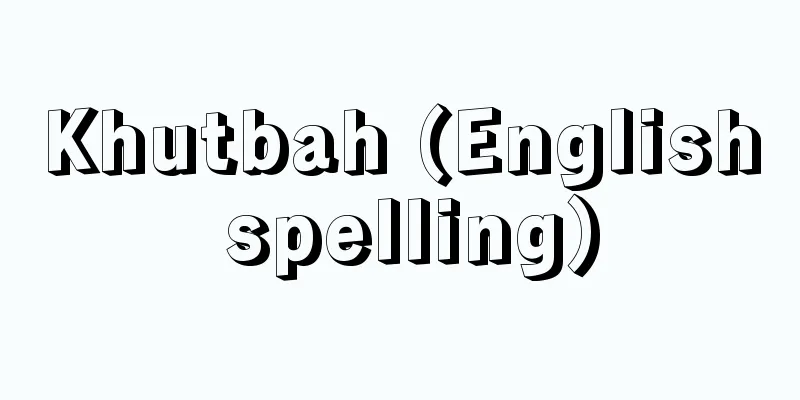


![Collie [breed] - Collie](/upload/images/67cb9d47d45f0.webp)
